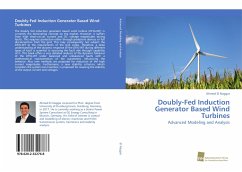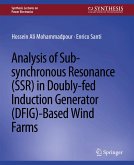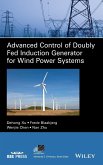The doubly fed induction generator based wind turbine (DFIG-WT) is currently the dominating concept on the market. However, it suffers from high short-circuit current and DC voltage magnitudes during faults. This requires protection either through protective devices or full disconnection from the grid. This may consequently not subject the DFIG-WT to the requirements of the grid codes. Therefore, a deep understanding of the dynamic response of the DFIG-WT during different types of fault is essential in assessing the fault ride through capability of it. This book offers a very detailed analysis of the dynamic behavior of the DFIG-WT under balanced and unbalanced faults with a mathematical representation of the parameters influencing the behavior. Also new methods are proposed for reduction of the high current magnitudes. Furthermore, a new stability criterion, which considers the system non-linarities, is proposed for assesing the stability of the output current and voltages.
Bitte wählen Sie Ihr Anliegen aus.
Rechnungen
Retourenschein anfordern
Bestellstatus
Storno








